Imagine | Design
TRANSFORM YOUR SPACE AND DESIGN YOUR DREAM.
Concept Design Concept Design Concept Design
Concept design inclusive of branding, graphics & signage, theming, entertainment mix, architecture, and financials are all important aspects to consider when planning and developing a successful Family Entertainment Centre. Concept design should take into account the target audience and their preferences, creating a unique and engaging environment that caters to their needs. Branding and graphics should be consistent throughout the centre, conveying the centre’s overall theme and personality. Signage should be clear and easy to read, guiding visitors through the space and highlighting key attractions. Theming should be immersive and consistent throughout the centre, enhancing the visitor experience. Entertainment mix should offer a diverse range of activities that appeal to different age groups and interests, creating a fun and engaging atmosphere. Architecture should be functional and visually appealing, incorporating design features that complement the overall concept and theme. Finally, financials should be carefully considered, including budgeting for construction, operation costs, and projected revenue. By successfully integrating all of these elements, a Family Entertainment Centre can create a successful business model that attracts repeat business and generates long-term revenue.
- Estimated Footfall
- Disposable Income
- Market Catchment Area
- Estimated Annual Revenue
- Average Price Per Play
- Target Customer Profile
- Operating Expenditure
- Capital Expenditure (CAPEX)
- Payback Period
- Project Cash Flow (ROI)
- P&L Statement
- 3D Props
- 2D Relief Props
- Wall Theming
- Signage
- Floor Plans
- Define Entertainment Matrix
- Interior Perspective
- Define “Look & Feel”
- Theming
- Zoning
- Mascot
- Staff Uniform
- Name
- Logo
- Corporate Identity
Concept Design Concept Design Concept Design
Concept design inclusive of branding, graphics & signage, theming, entertainment mix, architecture, and financials are all important aspects to consider when planning and developing a successful Family Entertainment Centre. Concept design should take into account the target audience and their preferences, creating a unique and engaging environment that caters to their needs. Branding and graphics should be consistent throughout the centre, conveying the centre’s overall theme and personality. Signage should be clear and easy to read, guiding visitors through the space and highlighting key attractions. Theming should be immersive and consistent throughout the centre, enhancing the visitor experience. Entertainment mix should offer a diverse range of activities that appeal to different age groups and interests, creating a fun and engaging atmosphere. Architecture should be functional and visually appealing, incorporating design features that complement the overall concept and theme. Finally, financials should be carefully considered, including budgeting for construction, operation costs, and projected revenue. By successfully integrating all of these elements, a Family Entertainment Centre can create a successful business model that attracts repeat business and generates long-term revenue.
- Estimated Footfall
- Disposable Income
- Market Catchment Area
- Estimated Annual Revenue
- Average Price Per Play
- Target Customer Profile
- Operating Expenditure
- Capital Expenditure (CAPEX)
- Payback Period
- Project Cash Flow (ROI)
- P&L Statement
- 3D Props
- 2D Relief Props
- Wall Theming
- Signage
- Floor Plans
- Define Entertainment Matrix
- Interior Perspective
- Define “Look & Feel”
- Theming
- Zoning
- Mascot
- Staff Uniform
- Name
- Logo
- Corporate Identity
Conceptual Sketches
Conceptual sketches are an essential component of the design process for a Family Entertainment Centre. They allow designers to explore various layout and attraction options, refine ideas, and visualize the overall concept before moving on to more detailed plans. Conceptual sketches can range from simple hand-drawn sketches to more detailed 3D renderings, depending on the level of detail needed. These sketches can help to communicate the overall vision of the centre, highlighting key design features, attraction locations, and overall flow. They can also aid in identifying potential design challenges or opportunities, allowing for modifications before the final plans are developed. Conceptual sketches should be regularly reviewed and revised throughout the design process to ensure that the final product meets the client’s expectations and appeals to the target audience. Overall, conceptual sketches are an essential tool for creating a successful and engaging Family Entertainment Centre, allowing designers to transform their ideas into a tangible reality.
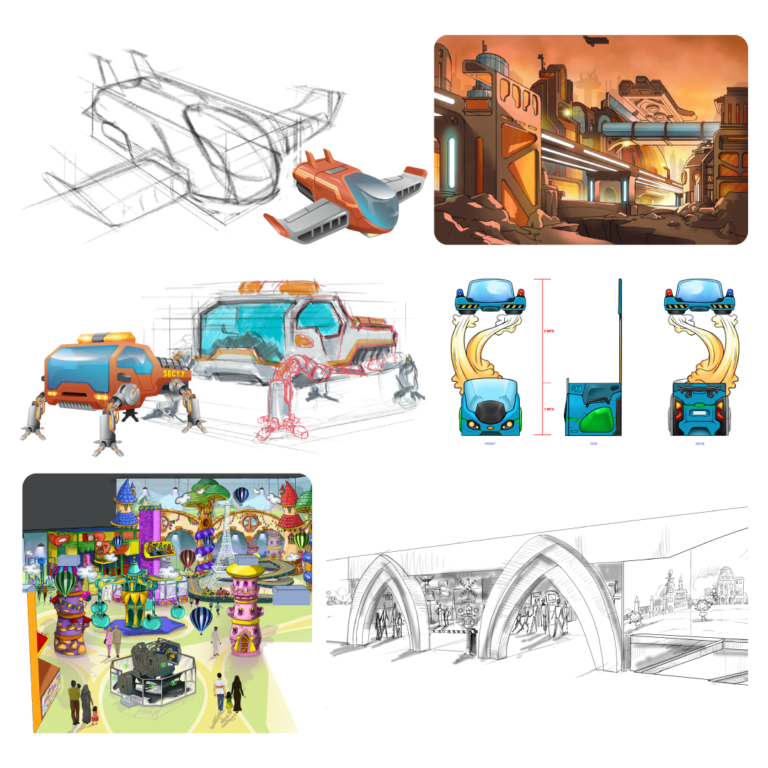
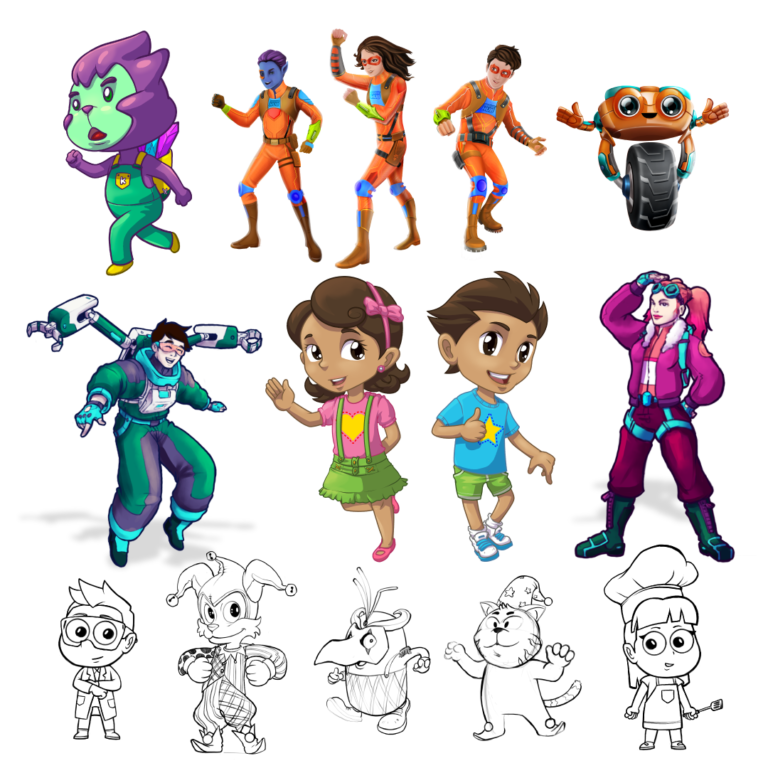
Mascots & Characters
Mascots and characters play a vital role in creating a memorable and engaging experience for visitors to a Family Entertainment Centre. These characters can be designed to reflect the overall theme of the centre, such as a cartoon animal or superhero, and can be used to enhance the overall atmosphere and visitor experience. Mascots can interact with visitors, pose for pictures, and even participate in shows or performances. Characters can also be used to guide visitors through the centre, providing a fun and interactive wayfinding solution. They can also be incorporated into branded merchandise, such as plush toys, t-shirts, and other souvenirs, providing an additional revenue stream for the centre. Overall, mascots and characters are an effective way to create a strong brand identity and increase visitor engagement, making them an essential component of a successful Family Entertainment Centre.
Branding & Logo
Branding and logo design are essential components in creating a successful Family Entertainment Centre. The logo should be memorable, unique, and reflective of the centre’s overall theme and personality. It should be easily recognizable and versatile, allowing it to be used across a range of mediums, from signage to merchandise. Consistency is key when it comes to branding, so all visual elements, such as color schemes, typography, and imagery, should be cohesive and reflective of the centre’s overall brand identity. Branding should also extend beyond visual elements, with a focus on creating a positive and memorable visitor experience. This can include everything from the design of the centre to the quality of service provided by staff. Ultimately, effective branding and logo design can help to differentiate the Family Entertainment Centre from competitors, create a strong brand identity, and ultimately drive revenue by attracting and retaining visitors.


Entrance Facade
The design of the entrance facade for a Family Entertainment Centre is an important aspect to consider, as it sets the tone for the visitor experience. The facade should be visually appealing, capturing the attention of passersby and creating a sense of excitement for what lies beyond. It should also be reflective of the centre’s overall theme and brand identity, with consistent design elements, color schemes, and imagery. The entrance should be welcoming and easy to navigate, with clear signage and wayfinding elements guiding visitors to the ticket counter or entrance gate. Consideration should also be given to the practical aspects of the entrance, such as weather protection, lighting, and accessibility for all visitors. Overall, the design of the entrance facade should create a positive first impression and set the stage for a memorable and engaging visitor experience within the Family Entertainment Centre.
Architectural Design Intent
The interior architecture of a Family Entertainment Centre plays a crucial role in creating an immersive and engaging visitor experience. The layout and flow should be carefully planned, ensuring that visitors can easily navigate the space and access all attractions. The design should also be reflective of the centre’s overall theme and brand identity, with consistent design elements, color schemes, and theming throughout. The choice of materials, lighting, and acoustics should all be carefully considered, creating a comfortable and enjoyable atmosphere for visitors. The use of technology, such as interactive displays and augmented reality, can also enhance the overall experience and create a sense of excitement and engagement. The interior architecture should also take into account the practical aspects of operating a Family Entertainment Centre, such as ease of maintenance, security, and accessibility for all visitors. Ultimately, a well-designed interior architecture can create a unique and memorable experience that encourages repeat visits and drives revenue for the Family Entertainment Centre.


Flooring Design
Flooring design is a crucial aspect of the overall design of a Family Entertainment Centre. The flooring should be durable, easy to clean and maintain, and able to withstand heavy foot traffic. It should also be reflective of the centre’s overall theme and brand identity, with color schemes and patterns that complement the decor and theming. The use of different flooring materials, such as carpet, vinyl, and hardwood, can also help to differentiate different areas of the centre, creating a sense of visual interest and variety. Additionally, the flooring design should take into account the safety of visitors, with slip-resistant surfaces in areas that may become wet or slippery, such as near water attractions. Overall, a well-designed flooring can enhance the visitor experience, contribute to the overall atmosphere and theming of the centre, and create a safe and enjoyable environment for visitors.
Ride Theming
Ride theming is an important aspect of creating an immersive and engaging visitor experience at a Family Entertainment Centre. Theming should be consistent throughout the ride, from the queue area to the ride itself and the exit. The theming should be reflective of the overall theme and brand identity of the centre, with consistent design elements, color schemes, and imagery. The use of audio, lighting, and special effects can also enhance the theming and create a sense of excitement and anticipation for the ride. In addition to creating a unique and memorable experience, ride theming can also help to differentiate the centre from competitors, attract visitors, and ultimately drive revenue. It is important to consider both the practical aspects of ride theming, such as maintenance and safety, as well as the creative and imaginative elements, to create a truly engaging and enjoyable experience for visitors of all ages.
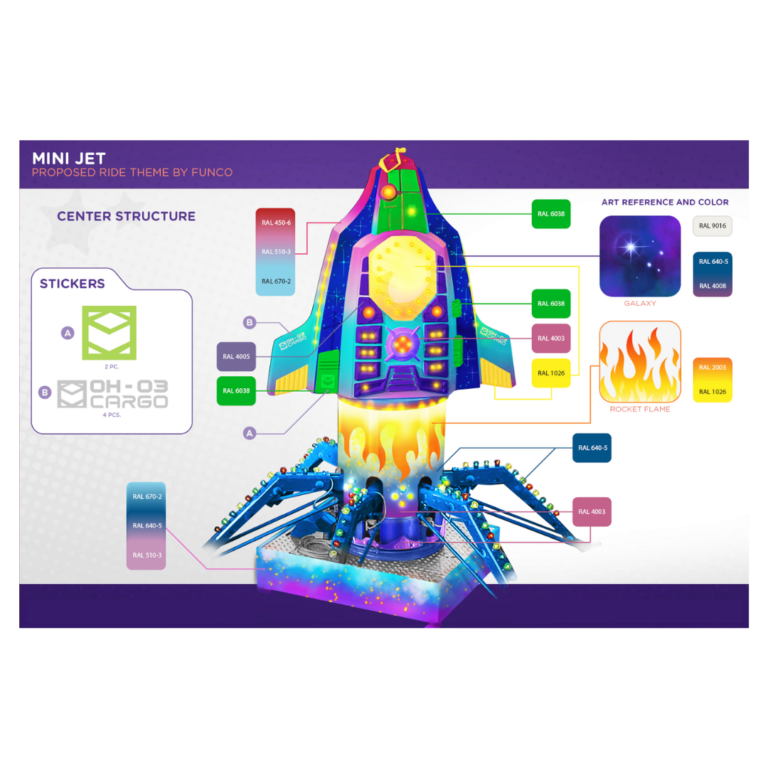
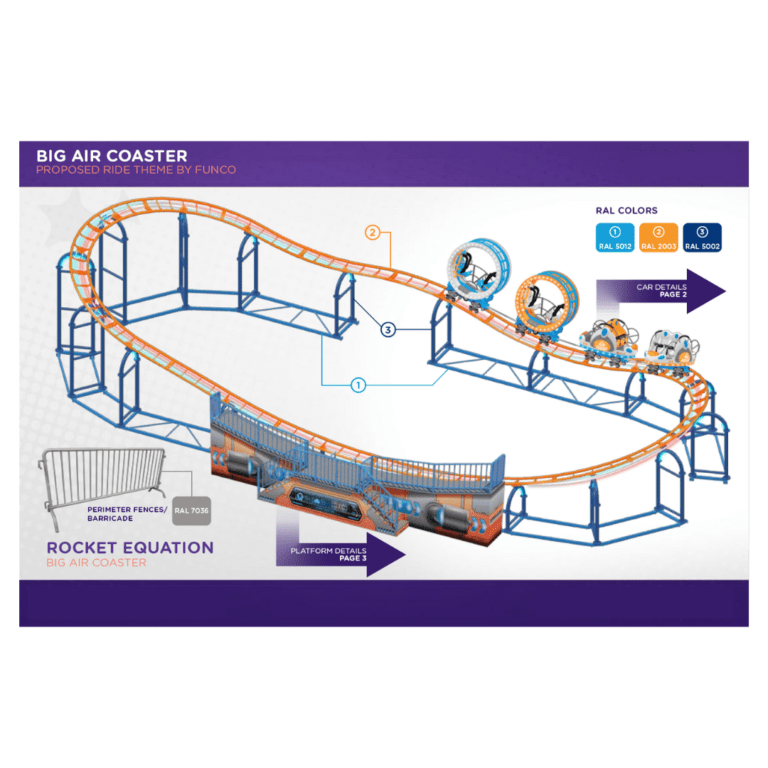

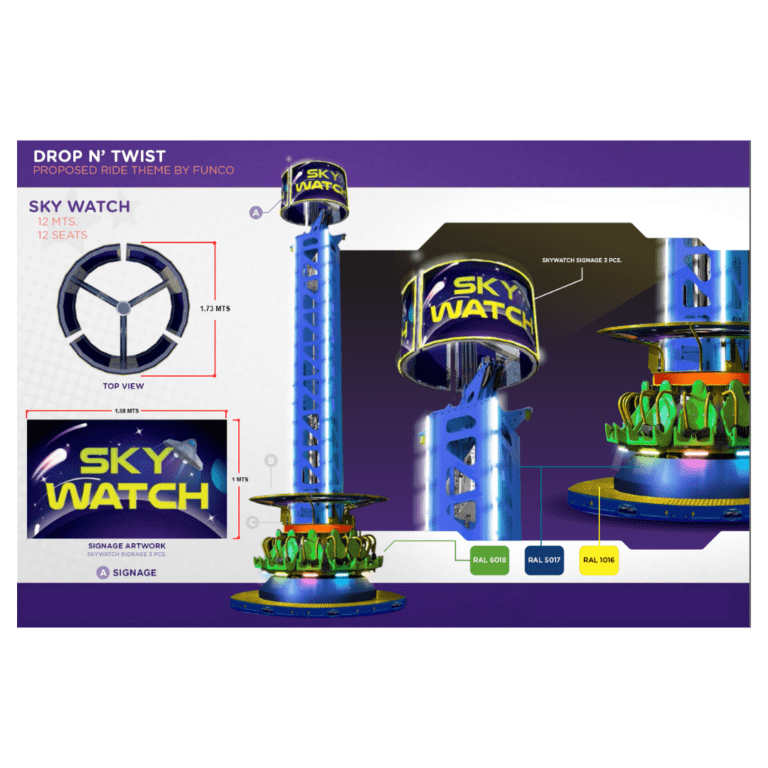
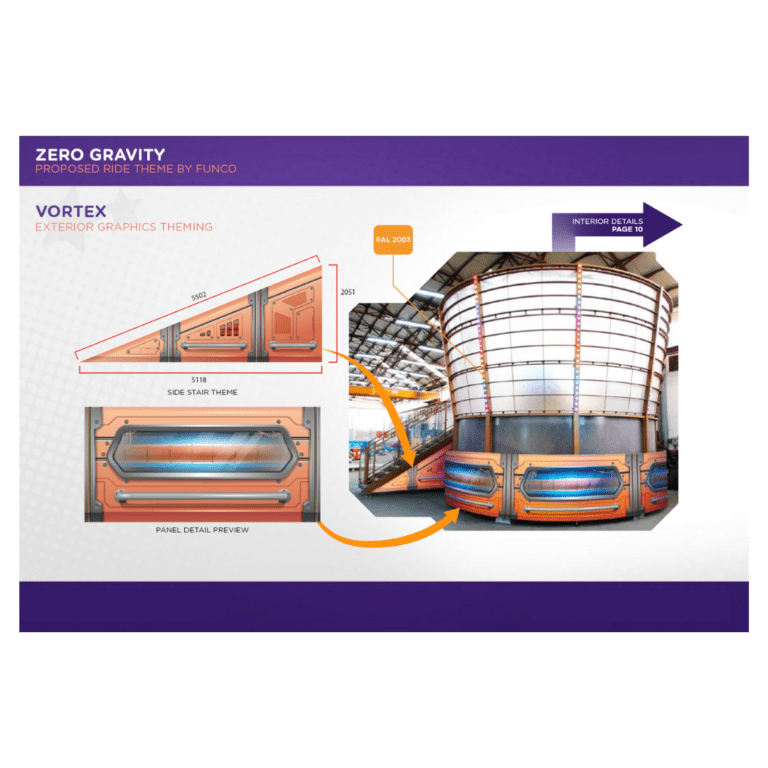
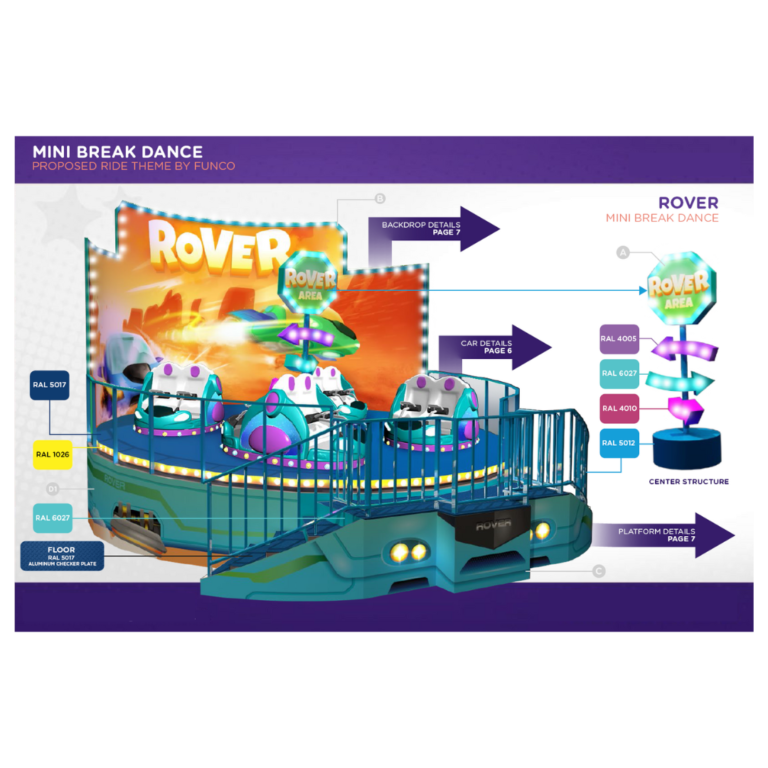
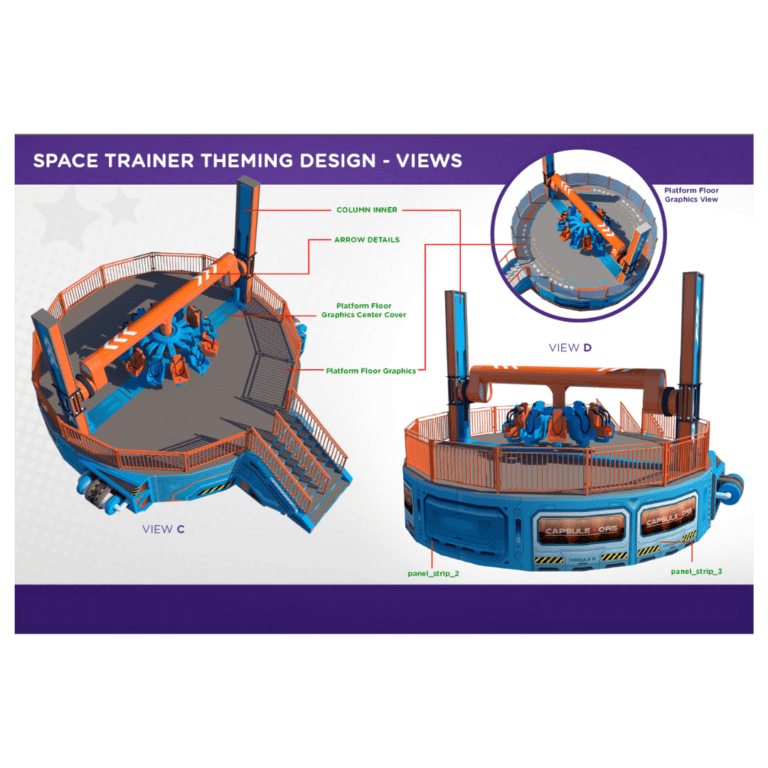
Interior Perspective
Creating good presentation of interior design has been our forte. Creating interior perspectives for a Family Entertainment Centre allows designers to visualize and communicate the proposed design to stakeholders and potential investors. Interior perspectives should accurately reflect the overall design concept, incorporating theming, branding, and attraction elements. The use of 3D rendering software can help to create realistic and immersive perspectives, allowing stakeholders to better understand the proposed design and make informed decisions. Interior perspectives can also be used to identify potential issues or areas for improvement in the design, allowing for adjustments to be made before construction begins. It is important to consider all aspects of the design when creating interior perspectives, from the layout and flow to the choice of materials and lighting. Ultimately, well-crafted interior perspectives can help to create excitement and anticipation for the Family Entertainment Centre, attract investors and visitors, and ensure a successful and enjoyable visitor experience.
Designing the perfect experience for you!


